
Nanotechnology is an applied science which deals with the study of objects at the range of 1 nm (1.0 x 10-9 m). A nanometre is one-billionth of a metre: 10 times the diameter of a hydrogen atom. Infact, science and technology of building devices such as electronic circuits made up of single atom and molecule is nanotechnology. The term collectively refers to the technological developments on the nanometer scale with its advancement in various fields. nanoscience has helped humans beings for their welfare in the form of nanomedical technology.
CONCEPT OF NANOTECHNOLOGY
Nanoscience is perceived to be the science of the future but it is actually for all the systems in our living and mineral world.
The properties of materials change in unexpected ways at the nanoscale. At this scale, the science of understanding the behaviour of molecules is critical to the rational design and control of nanostructures for all product applications.
Computation technologies such as quantum mechanical calculations, molecular stimulations and statistical mechanics are essential for understanding all nanoscale phenomena and molecular interactions.
NOTE
- A single human hair is about 100,000 nanometer wide. However, the diameter of a carbon nanotube is 2 nm, i.e., 50,000 times thinner as compared to a human hair.
- The idea of nanoscience was given by Sir Richard Feynman.
APPLICATIONS OF NANOTECHNOLOGY
There are many utilities of this technology for humans and nature.
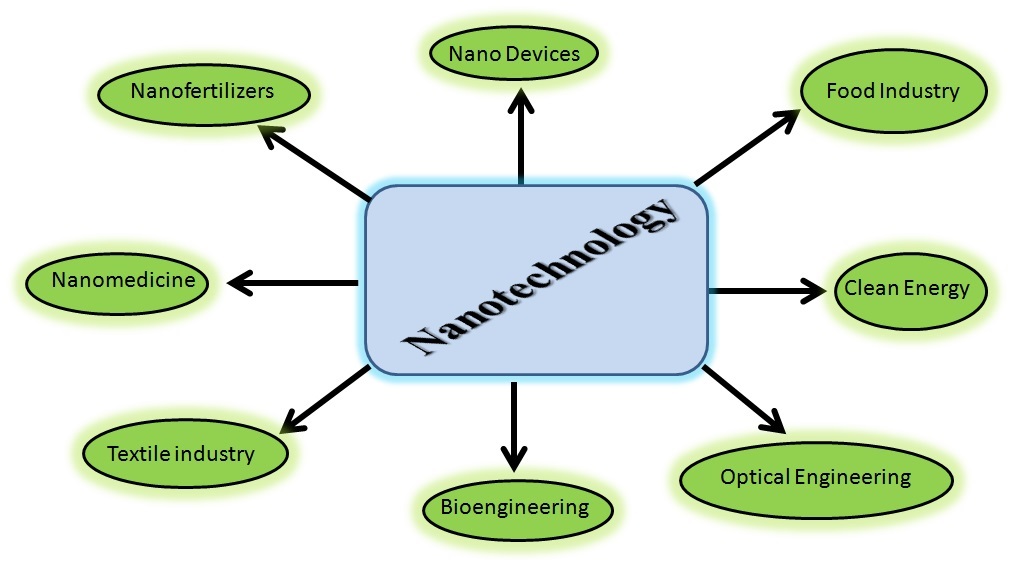
# SOLAR CELLS
Nanotechnology allowed the development of such solar cells that are 5 times more effective as compared to the traditional silicon-based solar cells. The silicon-based solar cells capture only about 6% of solar energy, the new technologies allow panels to capture upto 30% of solar energy.
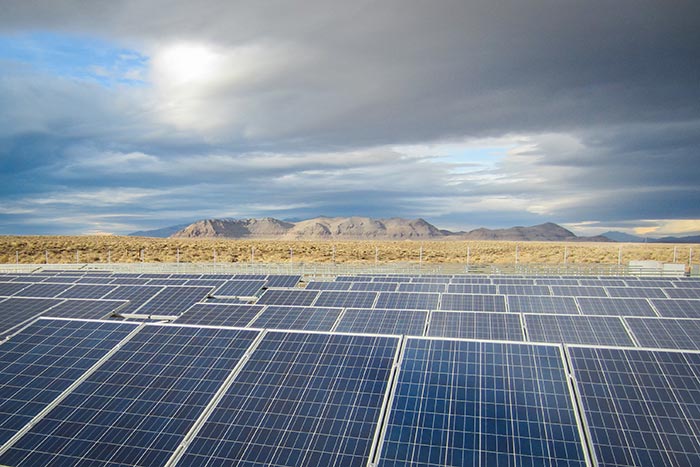
Installing these new solar cells across just 0.1% of the earth’s surface would supply enough energy to eliminate need of the oil. Further, these small solar cells being flexible could be cover into the clothes that you wear to charge a cell phone or computer. These cells could also be capable for charging the battery of the car. Piezoelectric nanofibres can be used for powering cellphones.
# FUEL CELLS
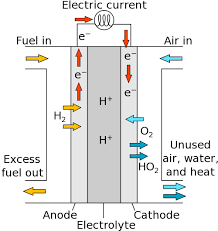
Nanotechnology also allows scientists to make more efficient and affordable fuel cells to power portable electronics and even vehicles. Traditional fuel cells resemble a battery pack, but contain an internal membrane that allows only hydrogen to pass through supply power. Using principles of nanotechnology, manufacturers can make this membrane even more efficient resulting in lightweight, high-powered fuel cells.
# REMOVAL OF TOXIC ELEMENTS
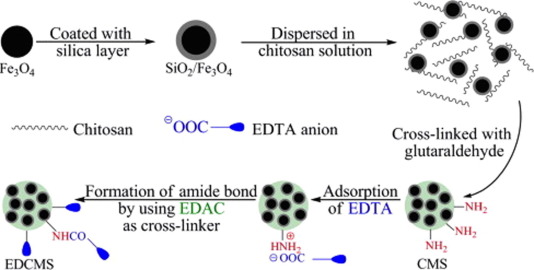
Nanomagnets (the microscopic magnetic particles) can capture arsenic in water, leaving it clean enough to drink. This technology removes as much as 99% of arsenic from water, special iron-based nano filters can serve as effective and low-cost alternatives to traditional carbon-based water filters. These tiny iron particles form a membrane barrier to quickly clean groundwater supplies much faster than traditional pumping techniques.
# ACCESSIBLE MEDICAL TESTING

Reagents used to test malaria must be refrigerated to get accurate results and shortage of refrigeration system makes it a big problem. In order to solve this problem, the US based Micronics Corporation has developed the DxBox, a disease testing kit, no larger than a credit card. Using dried reagents and nano-plumbing systems built into the face of the card, using this method doctors can perform basic blood tests without the need for refrigeration. The DxBox testing system can be used, not only for malaria and tuberculosis, but also to test half a dozen of other diseases.
# FOR CANCER TREATMENT
Modern chemotherapy provides one of the most effective methods for eliminating cancerous cells and preventing them from spreading. Unfortunately, the same powerful chemo drugs that kill cancerous cells can also damage healthy cells, leaving patients vulnerable to other illnesses, pain and nausea.
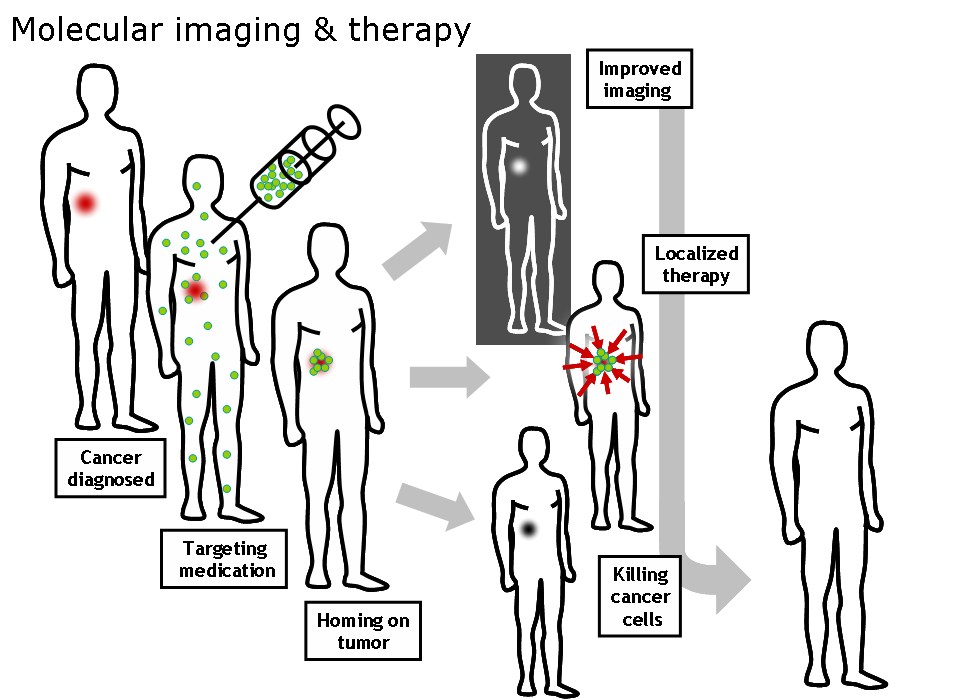 Nanoparticles may also give medical professionals, a glance into individual cells within the body. Using fluorescent semiconductor crystals, researchers have been able to spot pre-cancerous cells in the colon, leading to early treatment and prevention.
Nanoparticles may also give medical professionals, a glance into individual cells within the body. Using fluorescent semiconductor crystals, researchers have been able to spot pre-cancerous cells in the colon, leading to early treatment and prevention.
# NANOTECHNOLOGY AND AEROSPACE
Lighter and stronger materials will be of immense use to aircraft manufacturers, leading to increased performance. Nanotechnology would help to reduce the size of equipment and thereby decrease fuel consumption.
# NANOROBOTS
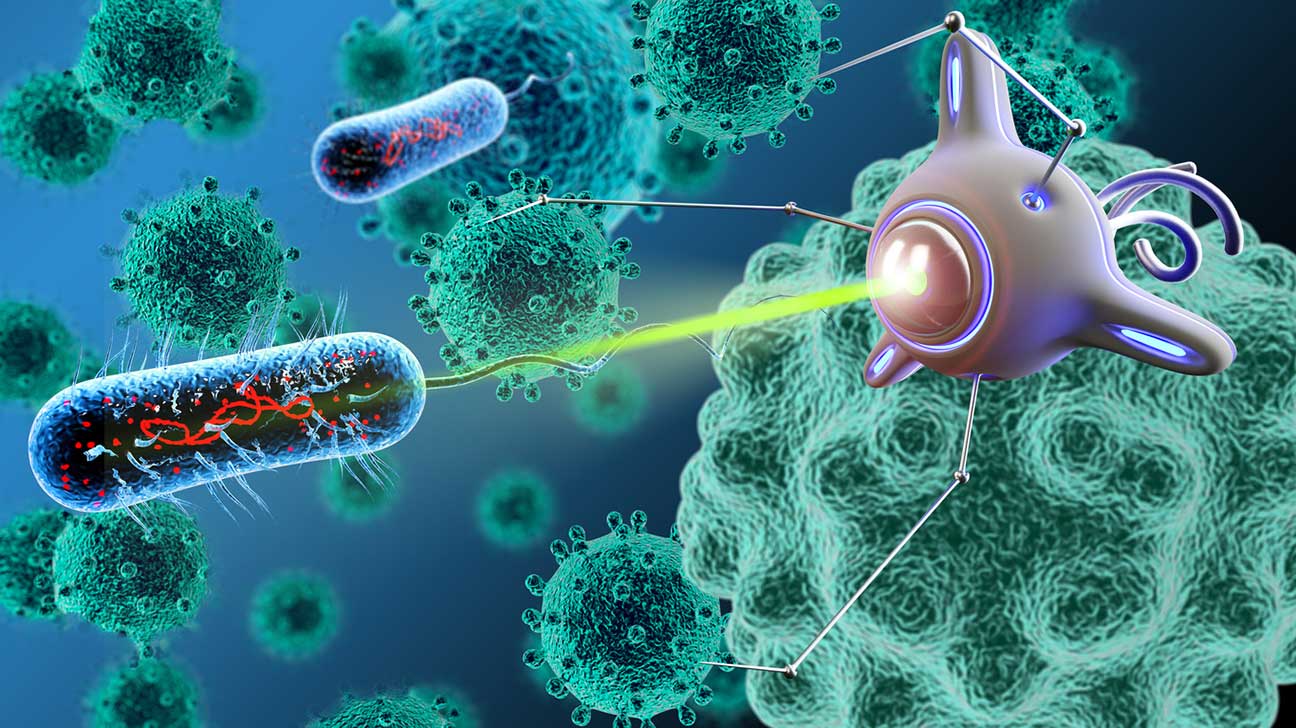
The nanorobots could actually be programmed to repair the specific diseased cells which functions in a similar way, as that of antibodies. These nano robots can repair and replace the cells.
SOME OTHER USES OF NANOTECHNOLOGY
- Nanoscale filters and nanoparticles could be used to clean the environment.
- Nanotechnology is used in the areas of renewable and sustainable energy to help the environment.
- Nanotechnology techniques are used to grow crops in hostile conditions.
CONCERNS RAISED ABOUT NANOTECHNOLOGY
- Nanoparticles have the potential to remain and accumulate in the environment.
- Nanoparticles can accumulate in the food chain.
- ‘Grey goo’: Tiny robots generated with nanotechnology could acquire the ability to self replicate.
- The toxicity of bulk material, such as solid silver, does not help predict the toxicity of nanoparticles of that same material.
